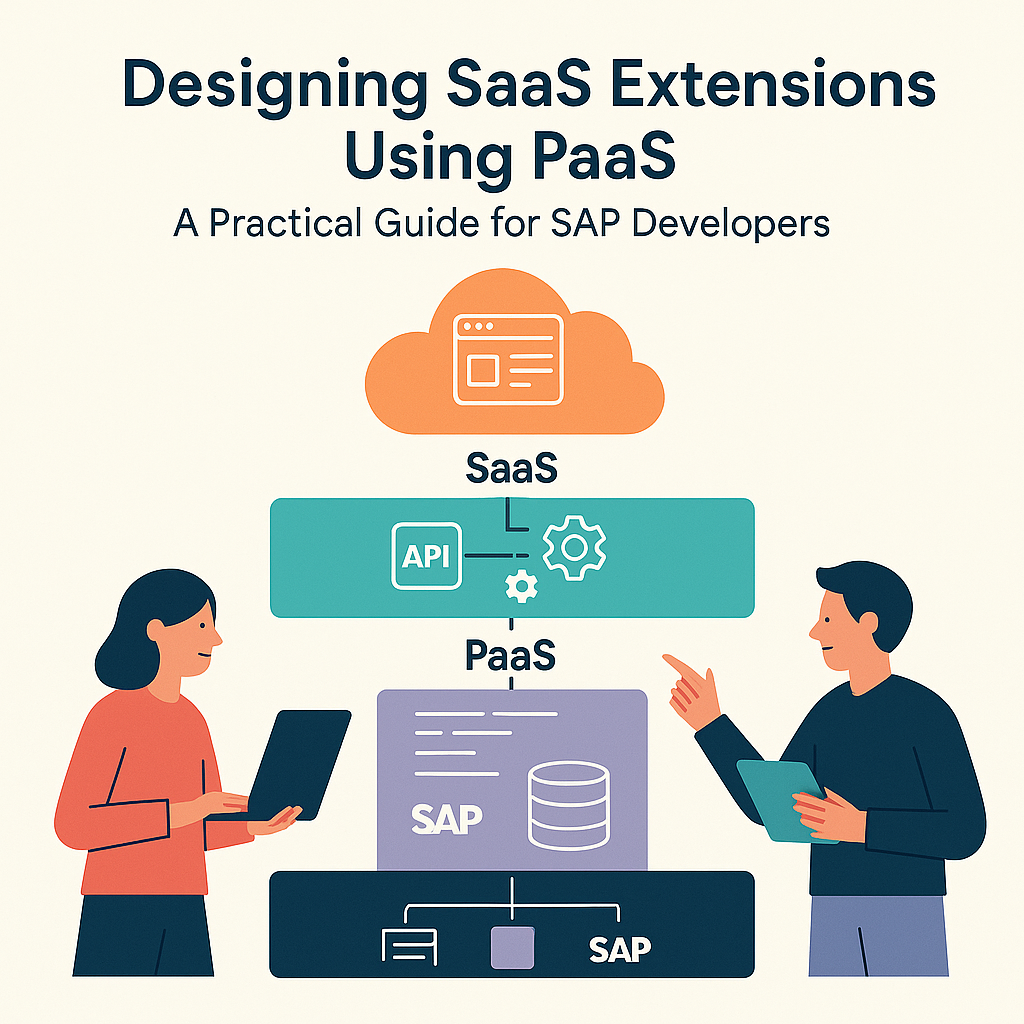In the ever-evolving world of enterprise software, one thing is clear: SaaS are here to stay for a very long time. But what happens when a SaaS solution doesn’t meet all the business needs? That’s where extensions come in. And if you’re working in the SAP ecosystem, Platform as a Service (PaaS) is your best friend.
Let’s break it down and explore how you can design SaaS extensions using PaaS, with SAP’s Cloud Platform
Why Extend SaaS Solutions?
SaaS applications are built for scale and efficiency, but they often come with standard features that may not fully align with every business process. Extensions help you:
- Add custom functionality without modifying the core SaaS application.
- Integrate with other enterprise applications (SAP or non-SAP).
- Automate processes unique to your business.
- Enhance user experience with tailored workflows.
The key? You don’t want to customize (which can break with updates), but rather extend using best practices.
Why PaaS is the Best Approach?
PaaS provides a middle ground between pure SaaS and fully on-prem applications. It offers the flexibility to build, run, and manage business applications without worrying about infrastructure and scale. For SAP, this means:
- No Core Modifications: You keep the SaaS system clean while adding new functionality externally.
- Scalability & Security: SAP BTP (Business Technology Platform) takes care of hosting, security, and scalability.
- Faster Development: Leverage SAP’s low-code/no-code tools and AI-powered capabilities.
- Future-Proofing: Your extensions will continue working even when the SaaS provider updates their core application.
How to Design SaaS Extensions Using SAP BTP
SAP BTP is the ideal PaaS for extending SAP SaaS solutions like SAP SuccessFactors, SAP S/4HANA Cloud, SAP Ariba, and others. Here’s a practical approach to designing your extensions:
1. Identify the Use Case
Before jumping into development, clarify what problem you’re solving. Ask:
- What business process needs enhancement?
- What data needs to be accessed or modified?
- Will this extension interact with external systems?
Example: Let’s say you want to build an Alumni Payslip Portal for ex-employees to access their tax documents. SuccessFactors doesn’t natively support this, but an extension could solve it.
2. Choose the Right SAP BTP Services
SAP BTP provides various tools and services. Selecting the right mix depends on your use case:
- SAP Integration Suite: If you need to connect your extension to multiple SAP and third-party apps.
- SAP Extension Suite: For building custom apps with Fiori/UI5, APIs, and workflow automation.
- SAP AI & ML Services: If your extension requires AI-powered insights (e.g., resume screening in SAP SuccessFactors).
- SAP Kyma Runtime: If you’re working with microservices and event-driven architectures.
- Cloud Foundry runtime: To deploy java or nodejs apps
3. Design the Extension Architecture
When designing the architecture, consider these best practices:
- API-First Approach: Leverage SAP APIs instead of modifying core tables.
- Side-by-Side Extensibility: Keep the extension separate from the SaaS solution to avoid breaking changes.
- Security & Authentication: Use SAP Identity Services for single sign-on (SSO) and role-based access.
- Event-Driven Processing: Utilize event triggers instead of polling data continuously (e.g., Kyma runtime for event-based execution).
4. Develop & Deploy
- Use SAP Business Application Studio or VS Code for development.
- Build the front-end using SAP Fiori/UI5 or integrate with other UI frameworks.
- Deploy to SAP BTP and test integration with the core SaaS system.
5. Monitor & Optimize
Once deployed, use SAP BTP’s monitoring tools to track usage, performance, and errors. Regularly update your extension to keep up with SaaS updates.
Real-World Examples of SaaS Extensions
1. Performance Management Extension for Retail Employees
Imagine a retail company using SAP SuccessFactors for performance management. Store managers need a simple app to quickly rate employees’ performance at the end of their shifts. The standard SuccessFactors UI is too complex for this use case.
Solution: A Lightweight Extension on SAP BTP
- A custom UI (built in SAP Fiori/UI5) lets managers give 1, 2, or 3-star ratings.
- Data is saved in SAP SuccessFactors Performance Forms via SAP APIs.
- Employees can view feedback in their SuccessFactors profile.
2. Bulk Offer Letter Generation for SAP SuccessFactors Recruiting
Recruiters often need to generate and send hundreds of offer letters in bulk, a task that is tedious in SAP SuccessFactors RCM.
Solution: A Custom Workflow in SAP BTP
- A web-based tool allows recruiters to upload candidate details in bulk.
- The extension generates offer letters dynamically using SAP Document Management Service.
- Emails are sent automatically via SAP SuccessFactors, reducing manual effort.
Final Thoughts
Designing SaaS extensions using PaaS is a game-changer for SAP developers. It lets you extend without breaking, innovate without disrupting, and deliver value faster. With SAP BTP, you get the flexibility to build powerful extensions while keeping the core SaaS system intact.
So next time you find yourself saying, “SAP doesn’t do this out of the box,” remember—you can just build it!
